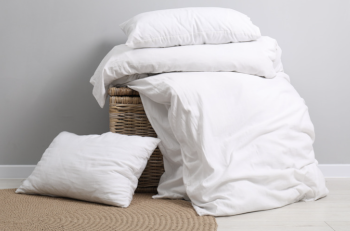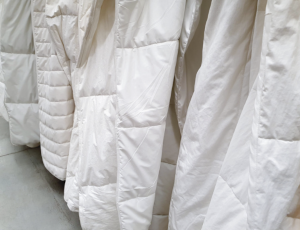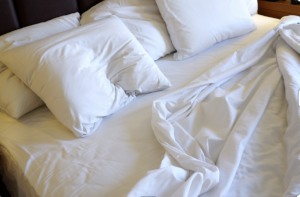
How Often Should We Change Our Pillows and Duvet?
If you can’t remember the last time you changed your pillows or duvet, you’re not alone. So, how often should we change our pillows and duvet?
Many of us hang onto these bedding essentials longer than recommended, which can affect our sleep quality and even, in some instances, our health.
WHY change our pillows and duvets?
It can be a bit gross, and we don’t even realise!
Over time, pillows and duvets collect dust mites, allergens, oils, and dead skin cells. Are you grossed out yet?
Even with regular washing of pillowcases and duvet covers, the inner filling can absorb and retain these particles, making it important to replace them periodically.
No-one wants to sleep with all that and as clean as we may be personally, these particles are a natural part of our existence. The trick is to try and reduce them and help maintain a clean sleep space.

WHEN should we consider changing our pillows and duvets?
Pillows: in most instances the suggestion is to replace every 1 to 3 years
Now, you may think that’s going to be an expensive exercise, however what you are potentially breathing in while sleeping can certainly affect your health.
Pillows don’t just lose their shape and comfort over time – they also become a breeding ground for dust mites and allergens. Depending on the type and quality of your pillow, replacement timeframes can vary.
- Synthetic pillows – replace every 1-2 years, as they lose support and may accumulate more allergens over time.
- Memory foam pillows – these can last up to 3 years but should still be checked for loss of shape and support.
- Down and feather pillows – these can last up to 5 years with proper care but consider replacing them if they start to clump or flatten
Regularly washing pillows helps prolong their lifespan, but if they become lumpy, stained, or causing neck pain, it’s time to replace them.
Duvets: replace every 5 to 10 years
A duvet or quilt/comforter can have a longer lifespan than pillows, but replacement is still recommended for hygiene and comfort.
- Synthetic duvets – generally last 5-7 years, depending on quality and care. They may flatten over time, losing warmth and comfort.
- Down and feather duvets – with proper maintenance, these can last 10+ years. Be sure to fluff and shake your down duvet regularly to keep it evenly distributed and prevent clumping.
In between replacing your duvet, airing it out regularly (by hanging it outside on a dry day) and washing it as recommended (usually every 6 months) can help keep it fresh, keep the dust mites at bay and prolong its lifespan.
There are some tell-tail signs it’s time for a replacement
Even if you haven’t hit the standard timeframe, look out for these signs that your pillows or duvet may need replacing.
Pillows – if they’re flat, lumpy, stained, or have an odour, these are usually quite obvious signs that they’re due for a replacement.
A good test is folding your pillow in half – if it doesn’t spring back, it’s time to replace it.
Duvets – if it feels flat, uneven, or you find yourself feeling cold at night, it might be time for a new duvet. Also, consider replacing if you notice allergies acting up, as this can be a sign of accumulated dust mites.

You might find some of these maintenance tips helpful to extend the life of your bedding
Use protectors – pillow and duvet protectors can add an extra layer of defence against allergens and spills.
Wash regularly – wash pillows every 3-6 months and duvets twice a year, following specific manufacturer care instructions on the item to prevent damage.
Air them out – regularly airing out pillows and duvets can help keep them fresh and prevent dust buildup.
In summary
There are some things you can do to help prolong the life of you pillows and duvets, however, be on the lookout for those tell-tail signs that scream…“time to replace”. If your gut thinks it’s time, it typically will be.
You can keep a track of your bedding’s lifespan by writing the purchase date on the care label. Staying on top of cleaning & replacing these key items will ensure that your sleep space remains cosy, clean, and supportive of your sleep quality.
Sweet dreams!
